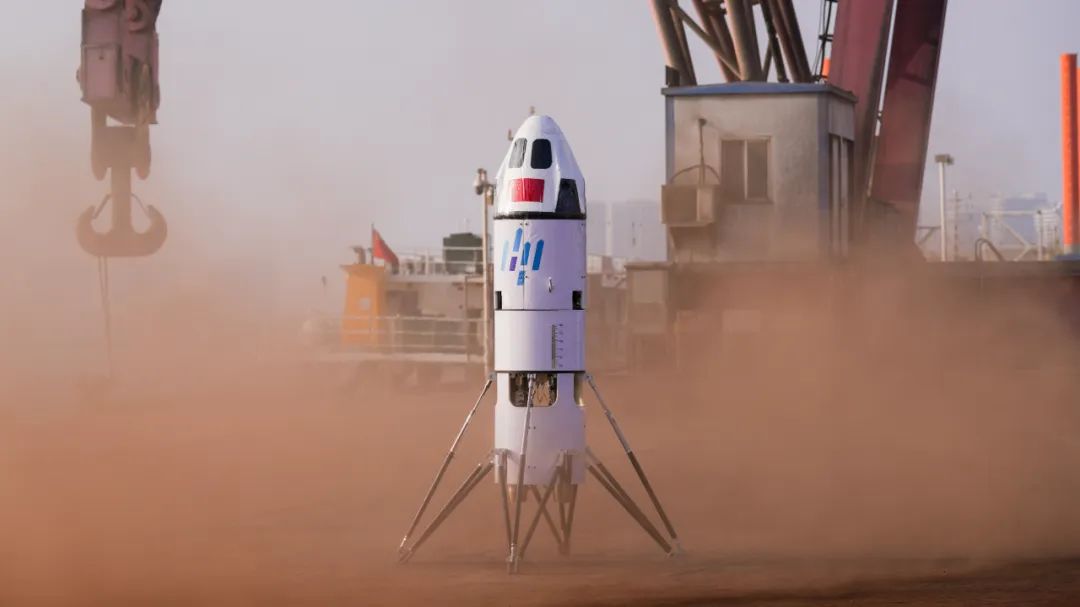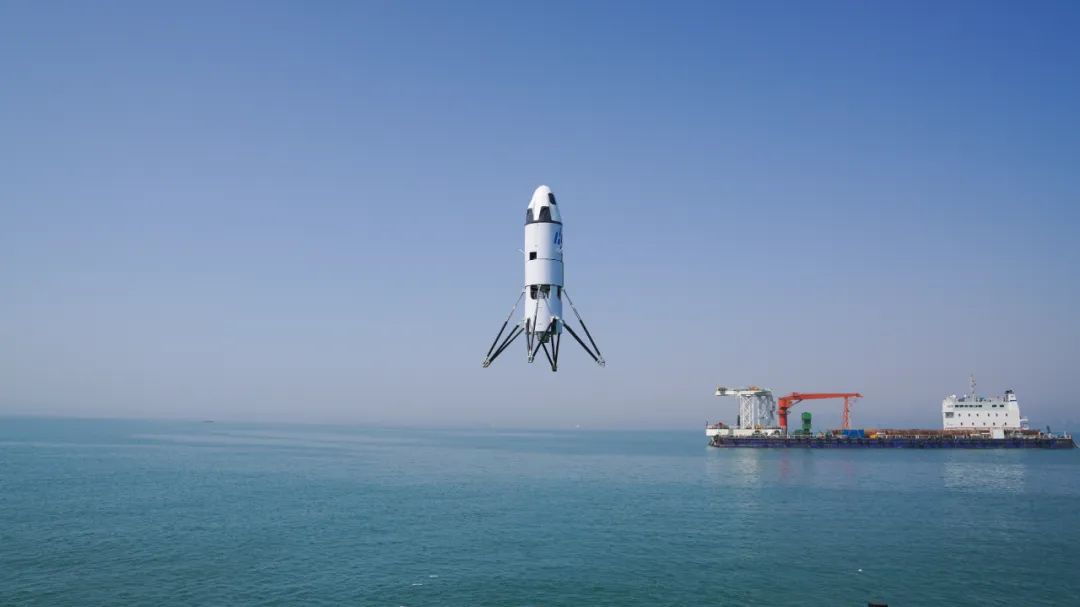
Since January, a series of land and sea-based Vertical Take-off and Vertical Landing (VTVL) tests has been performed. The tests in Haiyang, Shandong, were part of the demonstration and verifications process for CAS Space’s reusable launch vehicles in development. The success of the tests marked yet another milestone for CAS Space’s development in reusable launch vehicles.
 During the VTVL test, the entire process from the launch on land to the recovery at sea was simulated and verified, with a focus on verifying the process of retrieval at sea for the recovery of launch vehicle sub-stages. The tests validate communication and measurement with sea clutter and assess the flight environment in the lower atmosphere and the landing accuracy on the platform with disturbance. The vehicle reached a maximum flight altitude of over 1,000 meters, where it hovered for a designed duration before attitude adjustment followed by a controlled descent. When descending, the vehicle decelerated with the reverse thrust of the engine. Its approaching speed towards the landing platform was reduced to below 2 m/s. A soft landing was achieved through the buffering from landing gears. The flight lasted around 10 minutes and achieved an excellent landing accuracy of less than 10 meters.
During the VTVL test, the entire process from the launch on land to the recovery at sea was simulated and verified, with a focus on verifying the process of retrieval at sea for the recovery of launch vehicle sub-stages. The tests validate communication and measurement with sea clutter and assess the flight environment in the lower atmosphere and the landing accuracy on the platform with disturbance. The vehicle reached a maximum flight altitude of over 1,000 meters, where it hovered for a designed duration before attitude adjustment followed by a controlled descent. When descending, the vehicle decelerated with the reverse thrust of the engine. Its approaching speed towards the landing platform was reduced to below 2 m/s. A soft landing was achieved through the buffering from landing gears. The flight lasted around 10 minutes and achieved an excellent landing accuracy of less than 10 meters.
In terms of high-precision flight navigation technologies development, validation has been achieved for high-precision guidance, navigation and control technology for re-entry and return, prototype real-time trajectory generation and guidance for powered vertical recovery, self-adaptation to complex flight environment, and the prototype verification of the initial alignment and prolonged tracking for sea platforms with sea disturbances.
 The prototype is developed as a technology demonstrator. It adopts an integrated control system design that incorporates power supply and distribution, control, and telemetry. 3D printing was leveraged to design and process the anti-sway tank. A lightweight carbon fiber structure was used to realize the structural integration of force bearing, transmission, and vibration suppression. As such, multiple systems were functionally integrated and reused to substantially reduce the overall mass and the number of cable connections. The design is applicable in similar miniaturized spacecraft.
The prototype is developed as a technology demonstrator. It adopts an integrated control system design that incorporates power supply and distribution, control, and telemetry. 3D printing was leveraged to design and process the anti-sway tank. A lightweight carbon fiber structure was used to realize the structural integration of force bearing, transmission, and vibration suppression. As such, multiple systems were functionally integrated and reused to substantially reduce the overall mass and the number of cable connections. The design is applicable in similar miniaturized spacecraft.
The success of the test serves as a building block for subsequent efforts in developing near-space recoverable experimental platforms (NEXT-REP), the reusability of a space-capable vehicle, and space tourism. We will see them in action in subsequent Kinetica and other vehicle series from CAS Space.